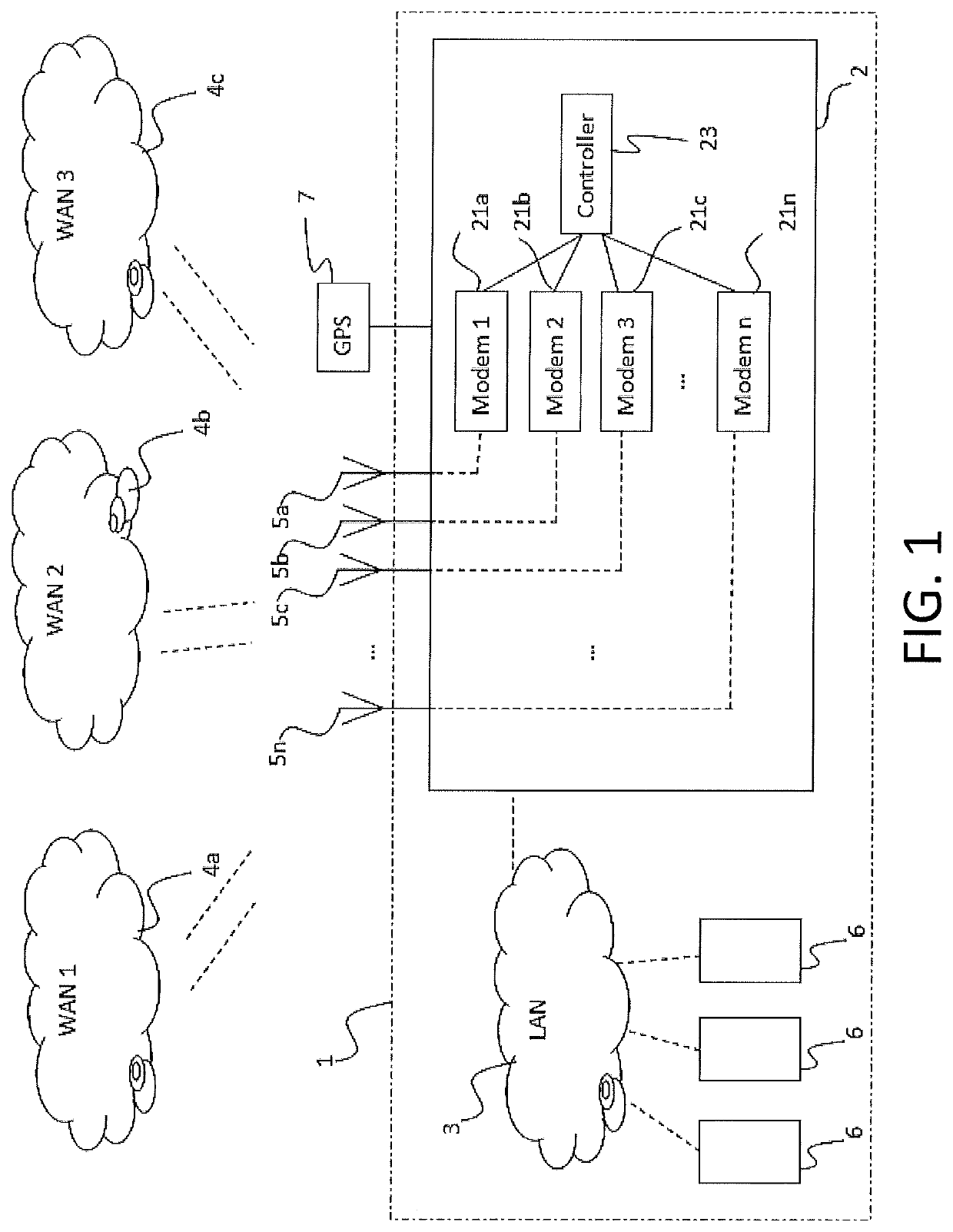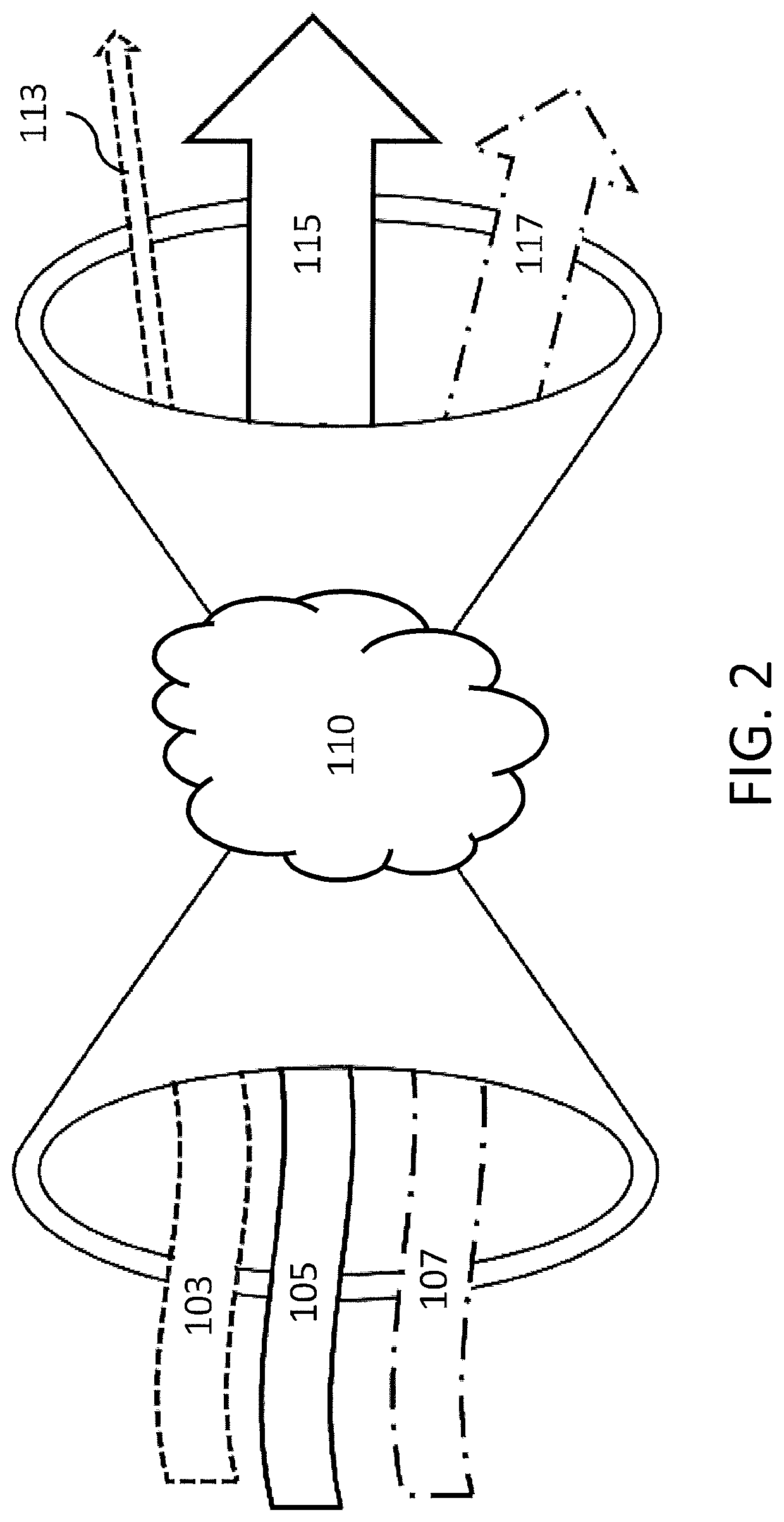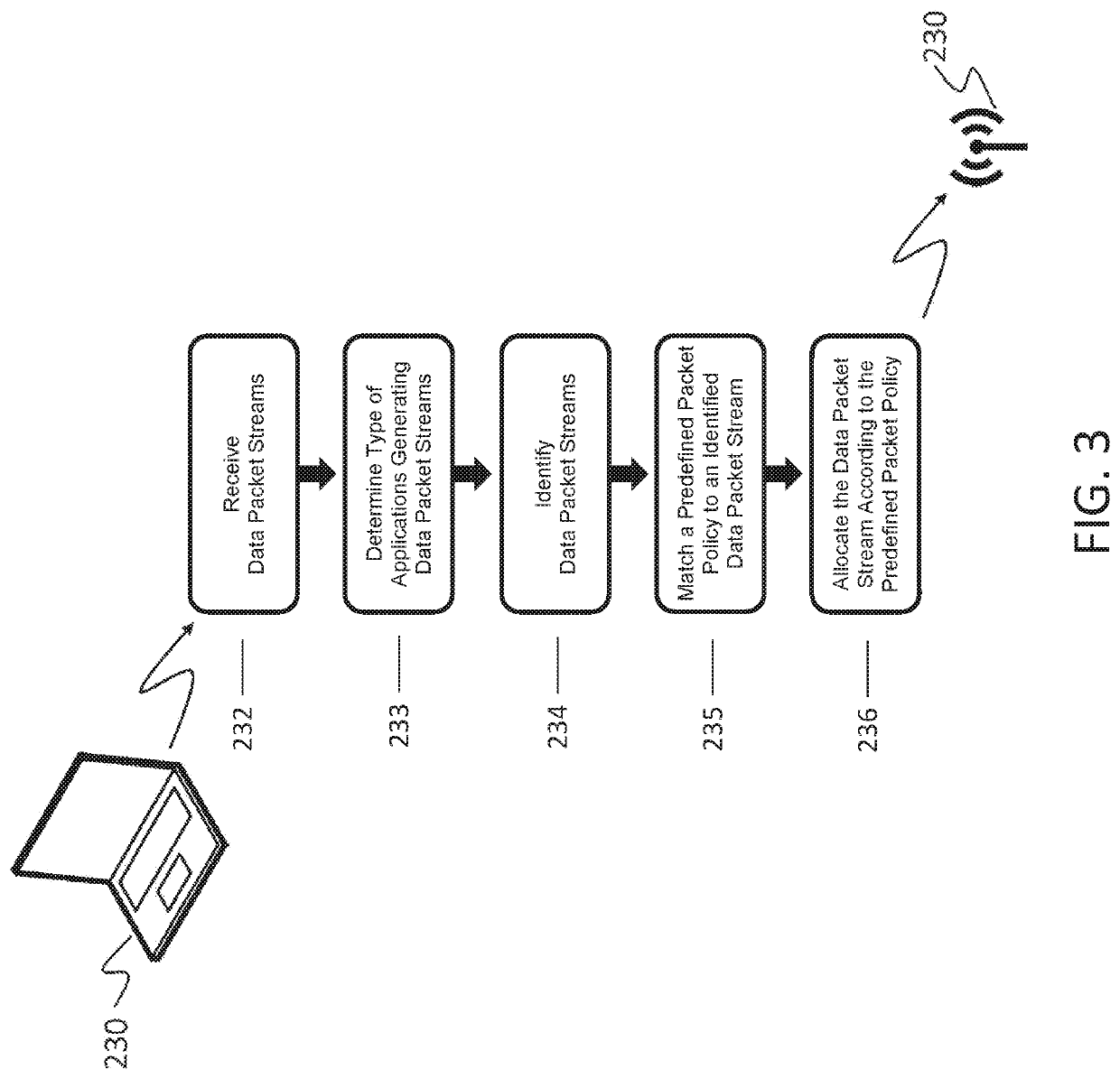Dynamic traffic shaping for communication networks in moving vehicles, such as trains
a technology for dynamic traffic and communication networks, which is applied in the direction of data switching networks, wireless communication, machine-to-machine/machine-type communication services, etc., and can solve problems such as introducing several potential sources of communication performance degradation, difficult to obtain direct communication between terminal antennas within the carriage and externally located antennas, and difficult to achieve such communication for mobile devices which are moving
- Summary
- Abstract
- Description
- Claims
- Application Information
AI Technical Summary
Benefits of technology
Problems solved by technology
Method used
Image
Examples
Embodiment Construction
[0047]In the following detailed description, preferred embodiments of the present invention will be described. However, it is to be understood that features of the different embodiments are exchangeable between the embodiments and may be combined in different ways, unless anything else is specifically indicated. Even though in the following description, numerous specific details are set forth to provide a more thorough understanding of the present invention, it will be apparent to one skilled in the art that the present invention may be practiced without these specific details. In other instances, well known constructions or functions are not described in detail, so as not to obscure the present invention. In the detailed embodiments described in the following are related to trains. However, it is to be acknowledged by the skilled reader that the method and system are correspondingly useable on other moving vehicles, such as buses, ferried, airplanes and the like.
[0048]In FIG. 1 a s...
PUM
 Login to view more
Login to view more Abstract
Description
Claims
Application Information
 Login to view more
Login to view more - R&D Engineer
- R&D Manager
- IP Professional
- Industry Leading Data Capabilities
- Powerful AI technology
- Patent DNA Extraction
Browse by: Latest US Patents, China's latest patents, Technical Efficacy Thesaurus, Application Domain, Technology Topic.
© 2024 PatSnap. All rights reserved.Legal|Privacy policy|Modern Slavery Act Transparency Statement|Sitemap



